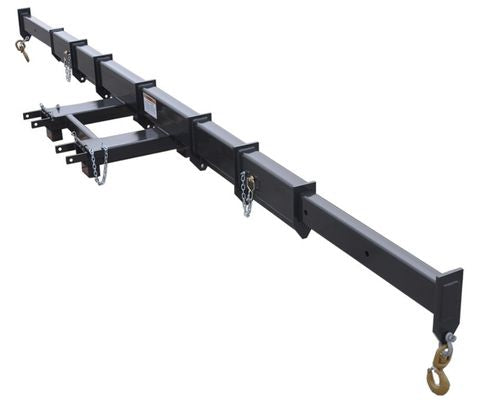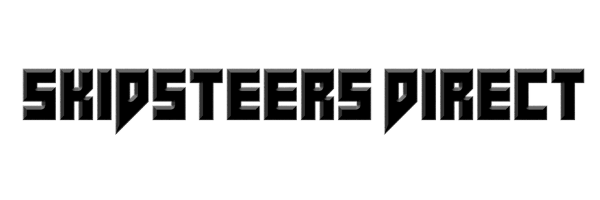
What is a Spreader Bar Attachment?
Share
What Is A Spreader Bar Attachment?
A standard attachment you'll see at many construction sites is fork-mounted spreader bars. If you are anything like me, you've probably wondered, what is a spreader bar anyways? Why are they so common, and what are crews doing with them?
In this article, we will explain a spreader bar attachment, provide examples of why one might be used while lifting loads, and show you some examples of high-quality fork-mounted spreader bars.
Key Takeaway
- Spreader bars convert lifting forces into compression and tensile forces which stabilizes loads.
|
Best Adjustable Spreader Bar

|
Adjustable Spreader Bar by Haugen Attachments |
|
|
|
Best Fixed Length Spreader Bar

|
Fixed Length Spreader Bar by Haugen Attachments |
|
What Is a Spreader Bar?
A spreader bar is an attachment used to distribute weight and keep loads stable during lifting and transportation. These bars are widespread in construction and industrial settings.
The design of a spreader bar is relatively straightforward, consisting of a fixed or adjustable length of powder-coated rectangular structural steel tubing. The ends of the steel tube will each have a heavy-duty swivel hook acting as lifting points.
Spreader bars will have swivel hooks on each end and some may have an additional single attachment point in the center. Adding a center lifting point will help stability with a suspended load, as well as help to spread the load along the length of the spreader bar.
Why Use a Spreader Bar?
A spreader bars primary purpose is to stabilize and distribute loads along the spreader beam. To begin with, we need to understand the difference between tensile and compression force.
Compressive forces are when an object is pushed and forced into a smaller size. For example, if you pushed inwards on both ends of a bar, you would apply a compressive force.
Tensile forces are when an object is pulled and forced into a larger size, essentially the opposite of compressive forces.
When spreader bars are correctly used, it converts the lifting force into compressive forces on the spreader bar and tensile forces on the lifted load. The added tensile force on the load helps to reduce tipping and promotes stability.
Every spreader bar attachment will have at least two lifting points (and sometimes more), which helps distribute heavy loads compared to single lifting point systems.
Spreader Bar Designs and Options
Not all spreader bars are built equally, and not all components on spreader bars are of the same quality. Here are some items to consider when looking at spreader bar attachments.
Fixed and Adjustable Lengths
Fork-mounted spreader bars come in fixed or adjustable lengths. Adjustable length spreader bars will slide in and out on both ends and have a pin to lock them at predetermined lengths.
The sizes of adjustable spreader bars are 8' to 12', 10' to 15' and 13' to 20'. The lifting capacity changes depending on the length of spreader bar and truss jibs, as less leverage allows for more weight.
Using Haugen's Fork Mounted Adjustable Spreader Bars as an example, we can see the maximum loads below:
-
5,000 pounds on each end at 63.375."
-
4,000 pounds on each end at 110."
-
3,500 pounds on each end at 165."
-
3,000 pounds on each end at 201."
-
2,250 pounds on each end at 240."
Additionally, the center point position's maximum load is 10,000 pounds.

Fork Pockets
Any lifting or towing system is only as strong as its weakest part. For that reason, it's a good idea to keep the capacity of the forks in mind when using a fork-mounted spreader bar.
Fork-mounted spreader bars are commonly used with heavy-duty telehandler forks, typically built with large and robust fork pockets. 3.5" by 7.5" fork pockets are the standard, with a positive locking system that attaches behind the heel of both forks.
Top Hooks
Top hooks are an option on spreader bars to allow them to be used with cranes or forklift telehandlers. Rental shops and customers should strongly consider these options.

Hooks and Latches
An unfortunate place many manufacturers of spreader bars will try to save on production costs is in the actual swivel hook itself. The difference between an overseas $10 swivel hook and a $150 USA Made Crosby Hook is substantial in the final quality of your attachment.
Having a look at how the swivel hook and latch attach to the structural tubing of the bar also tells you something about the quality of the product. Ideally, the tab holding the swivel hook should fit entirely around the structural tube and be welded entirely around. This transmits the load entirely to the structural beam rather than relying on any single weld to keep the swivel hook to the beam.
It's also important to remember that the compressive forces on the spreader bar work through the swivel hooks, and their attachment point to the structural beam. With that said, these attachment points will likely want to bend inwards. This bending force, combined with poor design and metal fatigue, can cause failure.

OSHA Approval
Ensure that your spreader bar is OSHA approved. This step alone will eliminate many low-cost and underbuilt spreader bar attachments.
What Spreader Bar Do We Recommend?
Haugen Attachments and Star Industries has become well known as the golden standard in Telehandler attachments and has been building spreader bars in North America for several decades. Years of experience, combined with the exceptionally engineering makes it our top recommendations.
Rigid & Adjustable Length Spreader Bars
Haugen's Spreader Bars encompass everything we are looking for in a spreader bar attachment.
-
72", 94" and 144" Fixed lengths available
-
8'-12', 10'-15', and 13'-20' adjustable models available
-
USA-made and OSHA approved
-
5 Ton USA made Crosby hooks included
-
Optional center hook available
-
Optional top hooks are available
-
3.5" by 7.5" fork pockets with locks behind the fork heel
-
10,000-pound capacity
-
Fully welded swivel hook tabs connecting to the structural tubing
For more information on Spreader Bar attachments, reach out to us today 866-990-7543.


